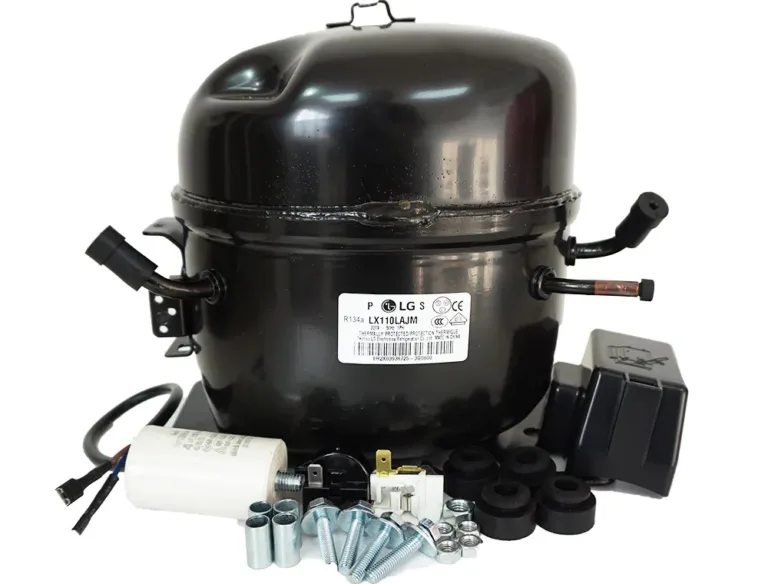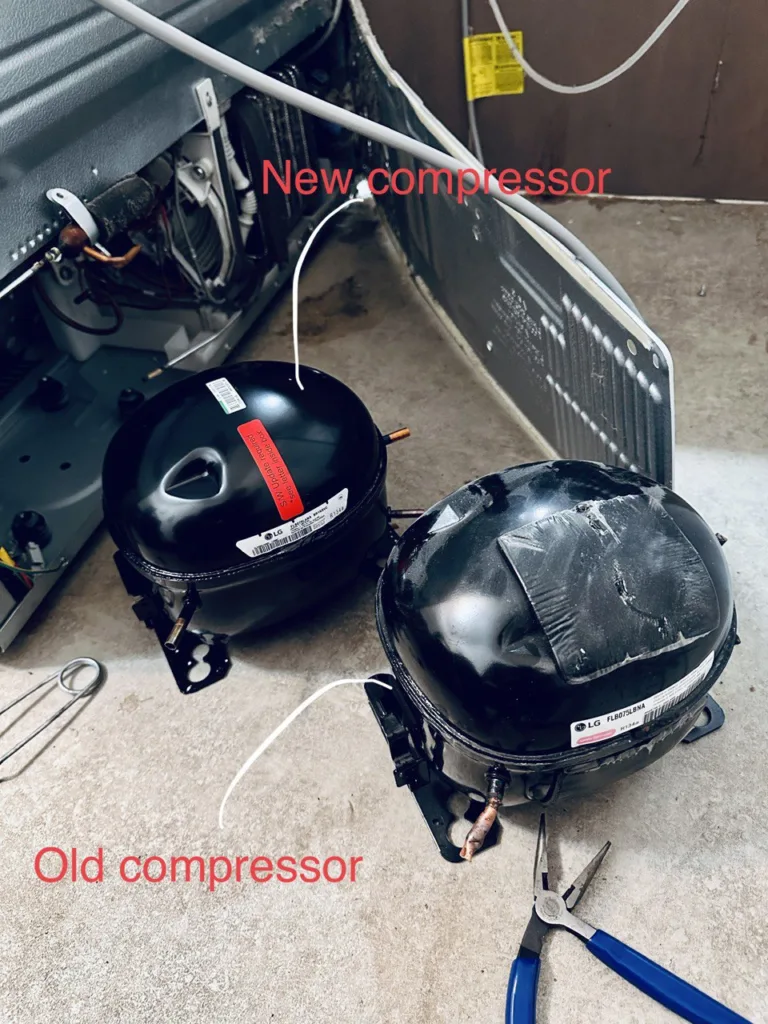Replacing a compressor in an LG refrigerator with Omega Tech Service Inc., whether it uses R134a or R600a refrigerant, is a complex process that involves handling potentially dangerous materials and requires specific technical skills, tools, and certifications.
Due to the significant differences in handling R134a (a hydrofluorocarbon) and R600a (isobutane, a flammable hydrocarbon), it’s crucial to follow safety protocols and environmental regulations closely.
This guide provides an overview, but remember, this work should ideally be done by a certified professional.
Safety First
Safety glasses and gloves are a must.
Especially important with R600a due to its flammability.
In many places, working with refrigerants requires EPA Section 608 certification for R134a or appropriate training for handling flammable refrigerants like R600a.
Tools and Materials Needed
- Refrigerant recovery machine (for R134a) or appropriate recovery system for R600a
- Vacuum pump
- Refrigerant tanks for R134a or R600a
- Manifold gauge set compatible with R134a or R600a
- Soldering or brazing equipment
- New compressor, specifically designed for R134a or R600a
- New filter drier compatible with your refrigerant type
- Leak detector
General Steps for Compressor Replacement
1. Refrigerant Recovery
– Connect the refrigerator to a refrigerant recovery machine.
For R134a, use a machine designed for R134a recovery.
For R600a, because of its flammability, ensure the recovery process is suitable for flammable refrigerants.
– Recover the refrigerant into a recovery cylinder.
2. Remove the Old Compressor
– Disconnect the refrigerator from the power source.
– Locate the compressor and disconnect its electrical connections.
– Unfasten the compressor from its mounting brackets.
– Cut the refrigerant lines connected to the compressor, leaving enough room to work for installing the new compressor. Do this step with caution, especially with R600a, due to its flammability.
3. Prepare the New Compressor
4. Evacuate the System
– Connect a vacuum pump to the system and evacuate it to remove moisture and air.
This process can take several hours.
5. Charge with Refrigerant
Leak Test:
After charging, use a leak detector to ensure there are no leaks in the system. Pay special attention to the soldered or brazed joints.6. Restart the Refrigerator
– Reconnect the electrical connections.
– Power on the refrigerator and monitor its cooling performance to ensure the new compressor is functioning correctly.
Important Considerations
Legality and Certification: Handling refrigerants and performing work on sealed refrigeration systems requires certification and adherence to legal and environmental regulations.
R600a Caution: Due to its flammable nature, extra caution must be taken when handling R600a, including ensuring adequate ventilation and avoiding ignition sources.
Warranty and Support: DIY repairs can void warranties. Check your warranty status and consider professional repair options.
Given the complexity and the specialized equipment required, compressor replacement is typically a job for a certified professional.
Our technicians of Omega Tech Service always have the necessary skills, tools, and certifications to safely and effectively complete the job while ensuring compliance with environmental regulations.
Software, firmware upgrade
We always do LG refrigerator software firmware upgrades with the last version (current manufacturer version 8.15).
Upgrading the software or firmware of an LG refrigerator after a compressor replacement is typically done to ensure optimal performance and compatibility.
Here are the main reasons for performing this upgrade:
— Compatibility with New Components:
The latest firmware may contain updates that optimize how the refrigerator’s electronic control board interacts with the new compressor. Since the compressor is a critical component for the cooling system, the firmware update ensures that the compressor operates efficiently with the refrigerator’s existing systems.
— Improved Performance:
New firmware versions often include performance enhancements that can improve the efficiency of the refrigerator. For example, firmware version 8.15 might include adjustments to compressor operation parameters, which can help reduce energy consumption, improve cooling performance, and extend the lifespan of the new compressor.
— Bug Fixes and Reliability:
Firmware updates often include bug fixes that address known issues in previous versions. These fixes can prevent potential problems that could arise with the new compressor, ensuring more reliable operation of the refrigerator.
— Enhanced Features and Functionality:
Sometimes, firmware updates introduce new features or improve existing ones. Upgrading to the latest version ensures the refrigerator is equipped with the most current functionalities, which can enhance user experience.
— Compliance with Warranty and Manufacturer Guidelines:
Manufacturers like LG may require firmware updates to be performed after component replacements as part of their warranty or service guidelines. This ensures that all components operate under the most current software standards, reducing the likelihood of service issues and maintaining warranty coverage.
By upgrading the firmware to the latest version after replacing the compressor, you’re ensuring that the refrigerator is running with the best possible configuration for performance, reliability, and longevity.
Did you like this article and find it helpful? Share the link with your friends!
- Published on






